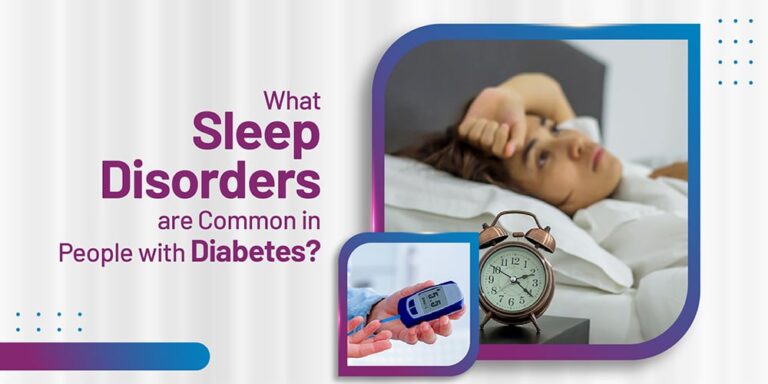Mental Illness: What are the Signs, Symptoms, and Treatments?

Understanding Mental Health Challenges: An Overview

Mental health challenges are an intrinsic part of the human experience. They affect individuals across all age groups, ethnicities, and socioeconomic backgrounds, and can have a profound impact on various aspects of daily life. From emotional wellbeing to cognitive functioning, mental health encompasses a wide range of factors that influence an individual’s overall state of being. Consequently, understanding these challenges and their implications is vital in promoting holistic health and wellbeing.
One of the key aspects of mental health challenges is the prevalence and diversity of conditions that fall under its umbrella. Disorders such as anxiety, depression, bipolar disorder, and schizophrenia are just a few examples of the wide range of mental health conditions that individuals may face. Each condition is unique in its symptoms and treatment approaches, further emphasizing the complexity of mental health challenges. By gaining a comprehensive understanding of these conditions, we can support those who are affected and work towards reducing the stigma surrounding mental health.
Recognizing the Early Warning Signs of Mental Health Issues
Recognizing the early warning signs of mental health issues is crucial in getting timely help and support. While mental health disorders can vary widely, there are certain common indicators that can serve as red flags. It’s essential to remember that these signs may not necessarily indicate a mental health problem on their own, but they can hint at the need for further evaluation and support.
One of the primary emotional signs of mental illness is persistent sadness or mood swings that are unusually intense or prolonged. Feeling constantly overwhelmed, irritable, or withdrawn from loved ones and activities you used to enjoy can also be a cause for concern. Additionally, changes in appetite, sleeping patterns, or experiencing excessive feelings of guilt or worthlessness may suggest an underlying mental health issue. While everyone experiences ups and downs in life, if these emotional shifts begin to interfere significantly with your daily functioning and last for an extended period, it’s essential to seek professional help.
On the cognitive front, mental health disorders can affect thinking and reasoning. Difficulty concentrating, memory problems, racing thoughts, or constant worry can be signs of anxiety or other mental health conditions. If you find it challenging to make decisions, experience prolonged confusion, or have intrusive thoughts that disrupt your daily life, it’s crucial to discuss these concerns with a mental health professional.
Recognizing and acknowledging these early warning signs is the first step towards seeking appropriate help and support. Early intervention can make a significant difference in managing and treating mental health disorders effectively. If you or someone you know is experiencing these symptoms, reaching out to a healthcare provider or mental health professional can provide the necessary guidance and support needed on the path towards recovery. Remember, you are not alone, and help is available.
The Impact of Stigma on Mental Health and Seeking Treatment
Stigma surrounding mental health continues to be a significant barrier for individuals seeking treatment and support. This misguided perception, fueled by misinformation and misunderstanding, can have detrimental effects on people’s well-being and their ability to access the care they need. The impact of stigma on mental health is multifaceted, affecting various aspects of individuals’ lives and perpetuating harmful stereotypes.
First and foremost, stigma creates an environment of shame and secrecy around mental health issues. Many individuals feel compelled to hide their struggles due to fear of judgment or discrimination. This culture of silence can lead to delayed or inadequate treatment, further exacerbating symptoms and hindering recovery. Moreover, those who internalize the stigma may develop feelings of self-blame and low self-esteem, compounding the already complex challenges they face.
Additionally, stigma can have a profoundly negative impact on the willingness of individuals to seek help. Research consistently shows that individuals experiencing mental health difficulties are less likely to seek treatment due to concerns about judgment or the belief that seeking help is a sign of weakness. This hesitancy to reach out for support not only prolongs suffering but also increases the risk of detrimental consequences such as self-harm or substance abuse. By perpetuating the notion that mental health issues are something to be ashamed of or unimportant, society unintentionally erects significant barriers to recovery and well-being.
It is crucial for society as a whole to recognize and challenge the detrimental impact of stigma on mental health. By fostering an environment of empathy, understanding, and acceptance, we can help individuals feel safe and supported when seeking the assistance they need. Eliminating stigma requires education and awareness campaigns to debunk myths and encourage open dialogue. It is only through collective efforts that we can create a society where mental health is treated with the same importance and compassion as physical health.
Psychological Symptoms: Identifying the Emotional Signs of Mental Illness
Psychological symptoms are crucial indicators of mental illness and can have a significant impact on an individual’s emotional well-being. It is important to recognize and understand these signs in order to provide appropriate support and treatment. One of the most common psychological symptoms is persistent sadness or depression. Individuals experiencing depression may feel hopeless, lose interest in activities they once enjoyed, have difficulty concentrating, and experience changes in appetite and sleep patterns.
Anxiety is another prevalent psychological symptom that can manifest in various ways. People with anxiety disorders may experience excessive worry, restlessness, irritability, and an increased heart rate. They may also have recurring thoughts or fears that interfere with their daily functioning. Furthermore, individuals with mental illness may exhibit intense mood swings, ranging from extreme elation to deep sadness or irritability. It is important to note that these symptoms can vary depending on the specific mental health disorder and the individual’s unique experience.
Cognitive Indicators: How Mental Health Disorders Affect Thinking and Reasoning
Mental health disorders can have a profound impact on an individual’s cognitive abilities, affecting their ability to think and reason effectively. These cognitive indicators serve as important warning signs and can help in the early detection and diagnosis of mental health conditions.
One of the primary cognitive indicators of mental health disorders is problems with concentration and focus. Individuals may find it difficult to stay attentive and may experience frequent distractions or racing thoughts. This can make it challenging for them to complete tasks, retain information, or engage in complex reasoning. For example, someone with depression may struggle to concentrate on their work or studies, leading to a decline in productivity.
Additionally, mental health disorders can also impair memory function. Individuals may have difficulties remembering recent events, recalling important details, or organizing their thoughts. This can lead to confusion, forgetfulness, and difficulties in decision-making. For instance, individuals with Alzheimer’s disease may experience severe memory loss, impacting their ability to perform everyday tasks independently.
Moreover, mental health disorders can alter a person’s perception of reality, leading to delusions or hallucinations. This distorted thinking can significantly impair their ability to reason logically and critically. Individuals experiencing psychosis, such as those with schizophrenia, may have difficulty distinguishing between what is real and what is not, which can greatly affect their ability to make rational judgments or solve problems.
Overall, understanding the cognitive indicators of mental health disorders is crucial in recognizing and addressing these conditions. By identifying changes in thinking and reasoning abilities, individuals, their loved ones, and healthcare professionals can take appropriate steps to seek early intervention and provide necessary support.
Behavioral Changes: Unusual Actions and Habits Associated with Mental Illness
Behavioral changes are often indicative of underlying mental health issues and can manifest in various ways. People experiencing mental illness may exhibit unusual actions and habits that are out of character for them. These behaviors can range from sudden mood swings and impulsivity to social withdrawal and changes in sleep patterns.
One commonly observed behavioral change associated with mental illness is a decline in personal hygiene. Individuals may neglect basic self-care tasks such as showering, brushing their teeth, or grooming themselves. This neglect can stem from feelings of apathy, low self-esteem, or the inability to engage in daily routines due to the overwhelming impact of their mental health condition.
Furthermore, individuals with mental illness may display noticeable changes in their social interactions. They may withdraw from social activities, isolate themselves from friends and family, or exhibit increased aggression or irritability. These shifts in behavior can be attributed to the emotional distress and disturbances in mood that often accompany mental health disorders.
It’s important to note that while these behavioral changes may be concerning, they are not a definitive diagnosis. It is crucial to seek professional help to accurately assess and address these concerns.
Physical Manifestations: The Physical Effects of Mental Health Disorders
Physical manifestations refer to the bodily symptoms and changes that can occur as a result of mental health disorders. These physical effects are often overlooked or misunderstood, but they play a critical role in understanding and addressing mental illness. It is important to recognize that mental and physical health are interconnected and can influence each other significantly.
One example of physical manifestations is the impact of chronic stress on the body. Prolonged periods of heightened stress can lead to a range of physical symptoms, such as headaches, stomachaches, muscle tension, and general fatigue. This can be attributed to the release of stress hormones, such as cortisol, which can affect various bodily systems.
Additionally, mental health disorders can also manifest in somatic symptoms, where individuals experience physical complaints without a clear medical cause. For instance, individuals with depression may experience changes in appetite, sleep disturbances, and unexplained pain. These physical symptoms can further exacerbate the emotional distress and make it challenging to differentiate between physical and mental health issues.
It is crucial to understand the physical manifestations of mental health disorders to ensure comprehensive treatment and care. By addressing the physical effects in conjunction with psychological symptoms, individuals can experience improved overall well-being and better outcomes in their recovery journey.
Common Mental Health Conditions: Exploring Different Disorders
Exploring Common Mental Health Conditions
In today’s society, there is an increasing recognition of the prevalence and impact of mental health conditions. The World Health Organization estimates that around 1 in 4 people will be affected by a mental health disorder at some point in their lives. With this in mind, it is crucial to gain a deeper understanding of the various common mental health conditions that individuals may encounter.
One such condition is anxiety disorders. Often characterized by excessive worry, fear, and uneasiness, anxiety disorders can significantly interfere with a person’s daily life. Generalized Anxiety Disorder (GAD), Panic Disorder, Social Anxiety Disorder (SAD), and Phobias are among the most common anxiety disorders experienced by individuals. Understanding the signs and symptoms of these disorders can help individuals seek appropriate treatment and support to alleviate their distress.
Anxiety Disorders: Types, Symptoms, and Effective Treatment Approaches
According to the National Institute of Mental Health, anxiety disorders are among the most common mental health conditions, affecting approximately 40 million adults in the United States alone. Anxiety disorders are characterized by persistent and excessive worry, fear, and apprehension that can interfere with daily life and functioning. There are several different types of anxiety disorders, each with its own distinct set of symptoms and treatment approaches.
One of the most common types of anxiety disorders is generalized anxiety disorder (GAD). Individuals with GAD experience excessive and uncontrollable worry about a wide range of everyday concerns, such as work, health, and relationships. They often have difficulty controlling their worry and may experience symptoms such as restlessness, fatigue, irritability, muscle tension, and sleep disturbances.
Another type of anxiety disorder is panic disorder. People with panic disorder experience recurrent panic attacks, which are sudden and intense episodes of fear that reach a peak within minutes. These panic attacks can be accompanied by symptoms such as chest pain, shortness of breath, dizziness, and a feeling of impending doom. Individuals with panic disorder often live in fear of experiencing future panic attacks, which can lead to avoidance of certain situations or places.
Obsessive-compulsive disorder (OCD) is another anxiety disorder that involves the presence of intrusive thoughts or obsessions, often accompanied by compulsions or repetitive behaviors. People with OCD may engage in rituals or behaviors in an attempt to alleviate their anxiety or prevent a feared outcome. These obsessions and compulsions can significantly disrupt daily life and cause distress.
Post-traumatic stress disorder (PTSD) is an anxiety disorder that can develop after experiencing or witnessing a traumatic event. Individuals with PTSD may re-experience the traumatic event through flashbacks, nightmares, or intrusive thoughts. They may also avoid triggers associated with the trauma and experience heightened arousal, such as difficulty sleeping, irritability, and hypervigilance.
Treatment for anxiety disorders often involves a combination of psychotherapy, medication, and lifestyle modifications. Cognitive-behavioral therapy (CBT) is a common form of therapy used to treat anxiety disorders, focusing on identifying and challenging negative thought patterns and developing coping strategies. Medications such as selective serotonin reuptake inhibitors (SSRIs) or benzodiazepines may also be prescribed to help manage symptoms.
It is important to remember that anxiety disorders are highly treatable, and seeking help from a healthcare professional is the first step towards recovery. Early recognition of symptoms and timely intervention can lead to improved outcomes and quality of life for individuals living with anxiety disorders. If you or someone you know is experiencing symptoms of an anxiety disorder, it is crucial to reach out for support and guidance. Remember, you are not alone, and there is help available.
Mood Disorders: From Depression to Bipolar Disorder
Mood disorders, such as depression and bipolar disorder, are complex mental health conditions that significantly impact a person’s emotional well-being and overall quality of life. These disorders affect millions of people worldwide, highlighting the importance of understanding their symptoms, causes, and treatment approaches.
Depression, often characterized by persistent feelings of sadness, hopelessness, and a loss of interest in activities once enjoyed, is one of the most common mood disorders. According to the World Health Organization (WHO), over 264 million people globally are affected by depression. It can interfere with daily functioning, impair relationships, and in severe cases, lead to thoughts of self-harm or suicide. While the exact cause of depression is not fully understood, factors such as genetics, biochemical imbalances, environmental stressors, and traumatic life events may all contribute to its development.
On the other hand, bipolar disorder, previously known as manic depression, is characterized by extreme shifts in mood, energy levels, and behavior. Individuals with bipolar disorder experience episodes of mania, where they feel elevated and euphoric, and episodes of depression, similar to those experienced in major depressive disorder. These episodes can last for days, weeks, or even months, and can have a profound impact on an individual’s ability to function normally. Bipolar disorder affects approximately 1-2% of the global population, and research suggests a combination of genetic and environmental factors play a role in its development.
Understanding the signs and symptoms of mood disorders is crucial for individuals, healthcare professionals, and society as a whole. Early recognition and intervention can lead to effective treatment outcomes, improved quality of life, and reduced risk of severe complications. Seeking professional help and support from mental health specialists, such as psychiatrists or psychologists, is essential for accurate diagnosis and the development of personalized treatment plans. Additionally, raising awareness and reducing stigma surrounding mood disorders can facilitate early intervention and promote a more compassionate and inclusive society for those affected by these conditions.
Psychotic Disorders: Understanding Schizophrenia and Related Conditions
Psychotic Disorders: Understanding Schizophrenia and Related Conditions
Schizophrenia is a chronic and severe mental disorder that affects how an individual thinks, feels, and behaves. It is one of the most complex and misunderstood mental health conditions, often accompanied by hallucinations, delusions, disorganized thinking, and significant impairments in daily functioning.
While the exact cause of schizophrenia remains unknown, research suggests that a combination of genetic, environmental, and neurological factors contribute to its development. Studies have shown that individuals with schizophrenia may have abnormalities in brain structure and function, specifically in the areas responsible for perception, thinking, and emotions.
Symptoms of schizophrenia typically emerge between late adolescence and early adulthood, which can be a critical period for personal and academic development. The signs may vary from person to person, but common indicators include social withdrawal, reduced motivation, decreased ability to concentrate, and distorted perception of reality.
Living with schizophrenia can be challenging, both for individuals experiencing the symptoms and their loved ones. However, early intervention and appropriate treatment can significantly improve outcomes and allow individuals to lead productive lives. It is essential to seek professional help if you suspect that you or someone you know may be experiencing symptoms of schizophrenia, as early diagnosis and treatment can make a substantial difference in managing the condition.
Eating Disorders: Signs, Symptoms, and Approaches to Recovery
Eating disorders are complex mental health conditions that can have severe physical and psychological consequences. They affect a significant number of individuals, predominantly young women, although men can also be affected. These disorders involve unhealthy and often dangerous patterns of eating, obsessing over food, body weight, and shape, and a distorted perception of one’s body image.
Common signs and symptoms of eating disorders include drastic weight loss or fluctuation, a preoccupation with food, calories, and dieting, excessive exercise, intense fear of gaining weight, and a distorted body image. Additionally, individuals with eating disorders often engage in unhealthy behaviors such as food restriction, binge-eating followed by purging, and self-induced vomiting. They may also exhibit secrecy surrounding their eating habits, withdrawal from social activities involving food, and an overall preoccupation with body weight, shape, and appearance.
Approaches to recovery from eating disorders often involve a multidisciplinary approach that includes medical, psychological, and nutritional interventions. Treatment may vary depending on the specific eating disorder and its severity. Psychotherapy, including cognitive-behavioral therapy (CBT) and dialectical behavior therapy (DBT), is frequently utilized to address distorted thoughts and behaviors associated with eating disorders. Nutritional counseling and support from registered dietitians are also crucial components of treatment, with a focus on normalizing eating patterns and establishing a healthy relationship with food. In severe cases, hospitalization or residential treatment may be necessary to ensure the individual’s safety and provide round-the-clock care.
While recovery from an eating disorder can be challenging and may require ongoing support, early intervention and treatment greatly increase the chances of a successful recovery. It is essential for individuals to seek help if they suspect they may be struggling with an eating disorder or if they notice any concerning signs or symptoms in a loved one. Remember, seeking professional help is not a sign of weakness, but rather a proactive step towards healing and restoring one’s overall well-being.
Substance Abuse and Mental Health: The Connection and Dual Diagnosis
The connection between substance abuse and mental health is a complex and often intertwined issue. Many individuals who experience mental health disorders turn to substances such as drugs or alcohol as a way to cope with their symptoms. Conversely, individuals who engage in substance abuse may develop mental health disorders as a result of their substance use. This dual diagnosis can worsen both conditions and create a cycle of dependency and poor mental health.
Research has shown that there is a strong correlation between substance abuse and mental health disorders. According to the National Survey on Drug Use and Health, individuals with a mental health disorder are more likely to have a substance use disorder, and vice versa. In fact, approximately 8.4 million adults in the United States have co-occurring mental health and substance use disorders.
The relationship between substance abuse and mental health is not a one-size-fits-all scenario. The specific interactions between the two conditions can vary depending on individual factors such as genetics, environment, and personal history. It is crucial to recognize that treating both substance abuse and mental health disorders simultaneously is essential for long-term recovery. Integrated treatment approaches have been shown to be the most effective in addressing these complex issues, as they target both the physical and psychological aspects of the individual’s well-being. By addressing both conditions simultaneously, individuals have a better chance of achieving lasting recovery and improved mental health.
Psychosocial Treatments: Therapeutic Approaches for Mental Health Disorders
Psychosocial treatments for mental health disorders encompass a range of therapeutic approaches aimed at improving the psychological and social well-being of individuals affected by such conditions. These treatments, often used in conjunction with medication, provide a holistic approach to address the complex nature of mental illness. They are tailored to the needs and preferences of each individual, recognizing the diversity and unique experiences of those seeking help.
One widely recognized psychosocial treatment is cognitive-behavioral therapy (CBT). CBT focuses on identifying and changing negative thought patterns and behaviors that contribute to mental health disorders. By helping individuals develop healthier coping mechanisms and challenging unhelpful beliefs, CBT empowers individuals to gain control over their thoughts and actions. Numerous studies have demonstrated the effectiveness of CBT in treating conditions such as depression, anxiety, and obsessive-compulsive disorder. It equips individuals with valuable skills that can be used long after therapy has ended. Additionally, dialectical behavior therapy (DBT) has proven particularly beneficial for individuals with borderline personality disorder, focusing on emotion regulation, distress tolerance, and interpersonal skills. These evidence-based approaches have a solid foundation in research and offer hope to individuals seeking relief from their mental health challenges.
Medication Options: An Overview of Psychopharmacological Treatments for Mental Illness
Psychopharmacological treatments play a crucial role in managing mental illness. These medications are designed to target specific neurotransmitters in the brain that are associated with various mental health conditions. By restoring balance to these chemicals, medication can help alleviate symptoms and improve overall well-being.
One of the most common classes of psychopharmacological medications is antidepressants. These medications are often used to treat mood disorders, such as depression and anxiety. Selective serotonin reuptake inhibitors (SSRIs), such as fluoxetine and sertraline, are commonly prescribed because they increase the availability of serotonin in the brain. Serotonin is a neurotransmitter that affects mood, and by regulating its levels, SSRIs can help alleviate symptoms of depression and anxiety.
Another class of psychopharmacological medications is antipsychotics. These medications are primarily used to treat psychotic disorders, such as schizophrenia. Antipsychotics work by blocking dopamine receptors in the brain, which helps reduce the severity of hallucinations, delusions, and disorganized thinking. Examples of antipsychotics include risperidone and olanzapine.
Mood stabilizers are another important class of psychopharmacological medications, particularly for bipolar disorder. These medications help regulate mood swings and prevent manic or depressive episodes. Lithium, valproic acid, and lamotrigine are commonly prescribed mood stabilizers that work by modulating neurotransmitter levels in the brain.
It’s important to note that medication alone is often not sufficient for managing mental illness. In most cases, a combination of medication, therapy, and lifestyle changes is recommended for comprehensive treatment. It’s also essential to work closely with a healthcare professional to find the right medication and dosage that suits individual needs.
What are some common side effects of psychopharmacological medications?
Common side effects of psychopharmacological medications may include drowsiness, dizziness, nausea, weight gain, dry mouth, and sexual dysfunction. However, it is important to note that side effects can vary depending on the specific medication and individual.
How long does it take for psychopharmacological medications to start working?
The time it takes for psychopharmacological medications to start working can vary. In some cases, individuals may begin to notice improvements in their symptoms within a few weeks, while for others, it may take several weeks or even months. It is important to follow the prescribed treatment plan and consult with a healthcare professional for guidance.
Can psychopharmacological medications cure mental illnesses?
Psychopharmacological medications are not a cure for mental illnesses. They can help manage symptoms and improve overall well-being, but they are most effective when combined with other therapeutic approaches such as counseling or therapy.
Are there any natural alternatives to psychopharmacological medications for treating mental illnesses?
While there are some natural alternatives that may provide relief for certain symptoms of mental illnesses, such as exercise, relaxation techniques, and dietary changes, it is important to consult with a healthcare professional before making any changes to your treatment plan. Natural alternatives should not be used as a substitute for prescribed medications without proper medical guidance.
Can psychopharmacological medications be addictive?
Some psychopharmacological medications have the potential for dependence or addiction. However, when taken as prescribed and under the supervision of a healthcare professional, the risk of addiction is generally low. It is important to follow the recommended dosage and discuss any concerns with your healthcare provider.
Can psychopharmacological medications be used in combination with other treatments?
Yes, psychopharmacological medications can be used in combination with other treatments for mental illnesses. In fact, a combination of medication and psychosocial treatments, such as therapy or counseling, is often recommended for optimal outcomes. It is important to discuss all treatment options with your healthcare provider to determine the best approach for your specific needs.
Are there any age restrictions for taking psychopharmacological medications?
The use of psychopharmacological medications in children and adolescents may vary depending on the specific medication and the individual’s age. Some medications may have age restrictions due to safety concerns or limited research in certain age groups. It is important to consult with a healthcare professional to determine the appropriateness of psychopharmacological medications for a specific age group.
Can psychopharmacological medications be used during pregnancy or while breastfeeding?
The use of psychopharmacological medications during pregnancy or while breastfeeding should be carefully considered and discussed with a healthcare professional. Some medications may pose risks to the fetus or infant, while others may be deemed safe under certain circumstances. The healthcare provider can weigh the potential benefits against the potential risks and provide guidance on the most appropriate course of action.
Are there any alternatives to psychopharmacological medications for treating mental illnesses?
Yes, there are alternative treatments for mental illnesses, such as psychotherapy, cognitive-behavioral therapy, and other psychosocial interventions. These approaches focus on addressing underlying issues and promoting mental well-being without the use of medications. It is essential to discuss all available options with a healthcare professional to determine the most suitable treatment plan for a specific individual.
Can psychopharmacological medications be stopped abruptly?
It is generally recommended to consult with a healthcare professional before stopping psychopharmacological medications. Abruptly stopping certain medications can lead to withdrawal symptoms or a recurrence of symptoms. A healthcare provider can guide the individual through a safe and gradual discontinuation process, if necessary.






